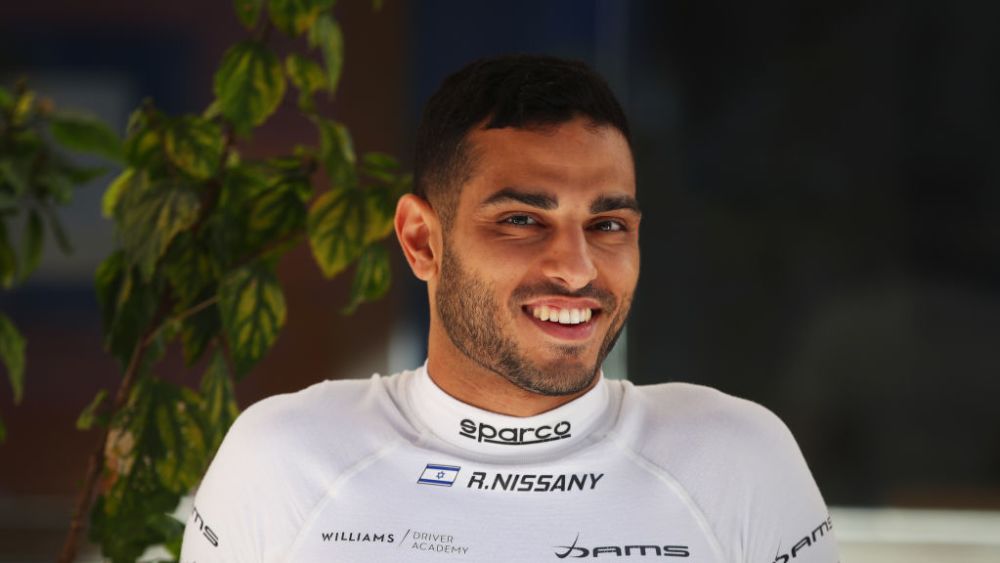Feature
Free Practice outings and doing the double: the moments that made Roy Nissany

Throughout his motorsport journey, there have been plenty of moments that have shaped Roy Nissany into the man he is today. From the pain of losing a victory, to dominating the track at Silverstone, to getting behind the wheel of a Formula 1 car, the DAMS driver reflected on the highs and lows of racing and the lessons he’s learnt along the way.
MISSING OUT ON A MAIDEN WIN
“The first one would be back in 2010, it was my first season in single-seaters, and I was racing in Formula BMW. There was a race in Monza and after starting in P8, I was overtaking car after car to reach P3. I arrived at Ascari on the last lap of the race and after the chicane, P1 and P2 were fighting for the lead. Whilst they were fighting, I used the slipstream from the driver in second to overtake both of them, diving into Parabolica first to win the race.
“That move was as if I was living the simulator fantasy that I had been driving at home for the past 10 years, putting the thing on easy mode, overtaking everybody and winning races. Doing it was kind of a kid’s fantasy and a dream and suddenly it was happening in reality. I will remember it forever.

“Afterwards, we went up to the podium, which was my first podium in my single-seater career, and the steward came into the room and said that they had to investigate. Eventually, I was penalised for overtaking with two wheels near the pit lane line, so my win didn’t count – but I won later that season so it’s fine! As a 15-year-old, it was definitely a very, very special moment and had a lot of influence on my career following that.
“It was a disastrous feeling to lose the win, traumatic event and I think it influenced me for years after until with some professional work, I removed the fear of this kind of trauma. Obviously, as a 15-year-old you absorb much more than you do in your adult life, so I really had to make sure that it wasn’t influencing me anymore and I could keep racing without having it in my head.”
DOING THE DOUBLE
“At Silverstone in 2016, I won both World Series Formula V8 3.5 races in one weekend. The value of a second consecutive win in a weekend, you feel it so much. Not just in terms of the dopamine and happiness, but you feel like you’ve dominated the weekend and that your potential is so high for the future. Your self-belief becomes very, very strong because you see what you’re capable of doing when the conditions allow.
“It’s not about luck or the right circumstances, it’s about you having an opportunity and doing the whole thing as you should have to realise your maximum potential. It gave a confidence boost like nothing else because it’s eventually what everybody around you on the grid is striving for. Once you are able to do such a thing, it’s like ‘okay, I can just keep on winning races now’ and I did. That gave me the power back then, rising from a career that was not full of wins, to give me the confidence to keep going for many more years until today.”

MAKING HIS FP1 DEBUT WITH WILLIAMS
“All of my FP1 appearances were very special, but definitely the second one in Monza in 2020. I was faster than my teammate and a Ferrari with the harder tyres on and everything just fell into place. Monza is one of my, if not my favourite tracks to drive on. We were quick on track, everything felt great, the results were very good, so it was a moment of pure happiness.
“I enjoyed it very much, I really felt like I was in my natural habitat there. It was different to the Formula 2 car because the workload is different, it’s more and less at the same time. You have less of a physical workload on your arms, but more on your neck and body and more for your brain to deal with in terms of multi-functioning – having more switches and more understanding of what’s going on mechanically whilst you have to perform.
READ MORE: Beckmann and VAR targeting podiums to cap off 2022 season of progress
“Your job in pure driving terms is very similar and I think the ability to switch between the two is very important, which I had to develop when I did both the F1 and F2 sessions in one day. On Friday we had F2 Free Practice, F1 Free Practice and F2 Qualifying back-to-back, so I kept the suit and the helmet on and just jumped between the cars.

“I could take back a lot of tyre information. It was kind of like a Bible with all the knowledge about the tyres, it’s so complicated and big and there so many philosophies around it. You learn a lot from F1 because they have the tools to research it, although the tyres aren’t exactly the same, so you have to take everything from the right perspective.
“There were also many other things in terms of temperatures and the mechanical side of how things are working. You try to take everything and translate it into F2, but we don’t have the same amount of sensors they have. Artistically, it leaves room for imagination – if F1 is a very precise portrait, then F2 is an abstract painting.”